
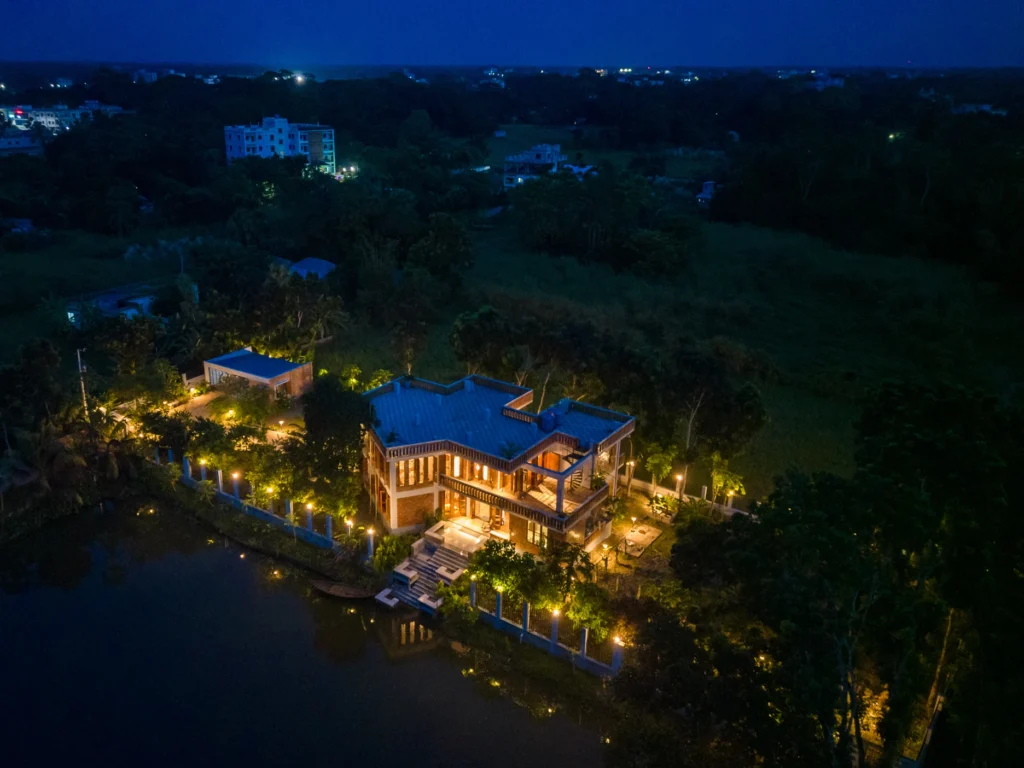
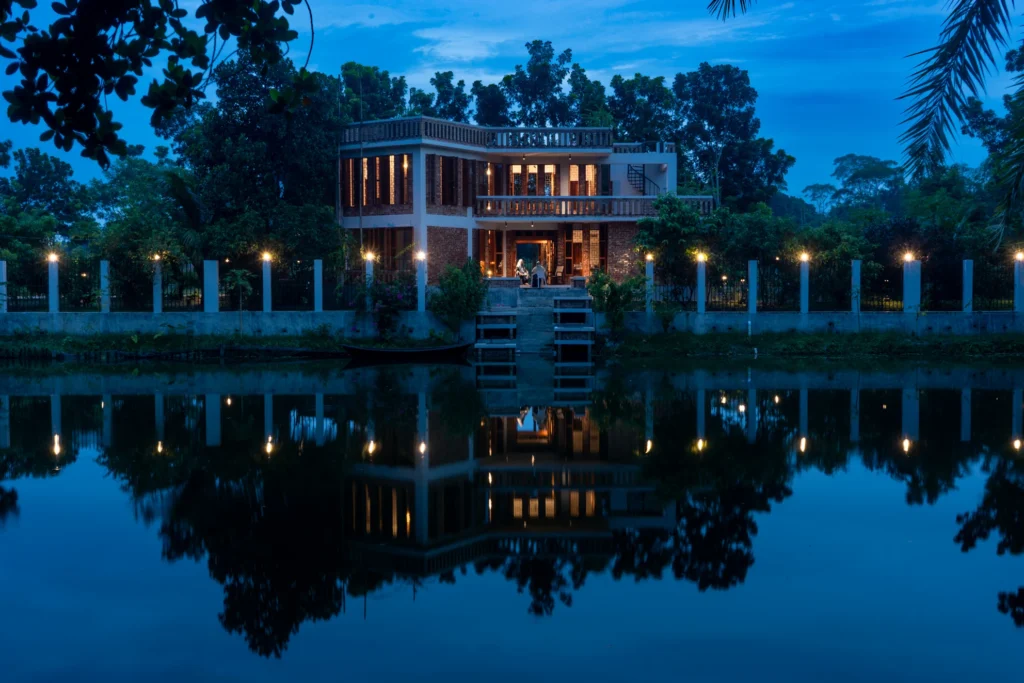
Located in the heart of Shibchar of Madaripur district of Bangladesh, this residence embodies the true essence of a traditional Bengali homestead. Set up amidst the lush greenery of a rural setting, the home is designed as a safe haven for the client’s family and relatives, offering a welcoming retreat for reunions and vacations. The client envisioned the family residence to be centrally located on their plot, overlooking a sizable pond. Other basic requirements included five bedrooms, public and family living, and other service amenities. The architect approached the project holistically, considering the family’s lifestyle and integrating religious rituals into the design.



Given the close-knit nature of the neighbourhood, where relatives reside in proximity, the house was conceived as a central gathering point for family interactions. Upon approaching the residence, an entry foyer leads to a semi-open veranda, generously sized to accommodate a large prayer space to pray together. This area is designed as a traditional “Kacharighar” meaning the public living room. The layout of the building also considers the plot’s northward tilt, aligning the prayer space to face west toward the qiblah.


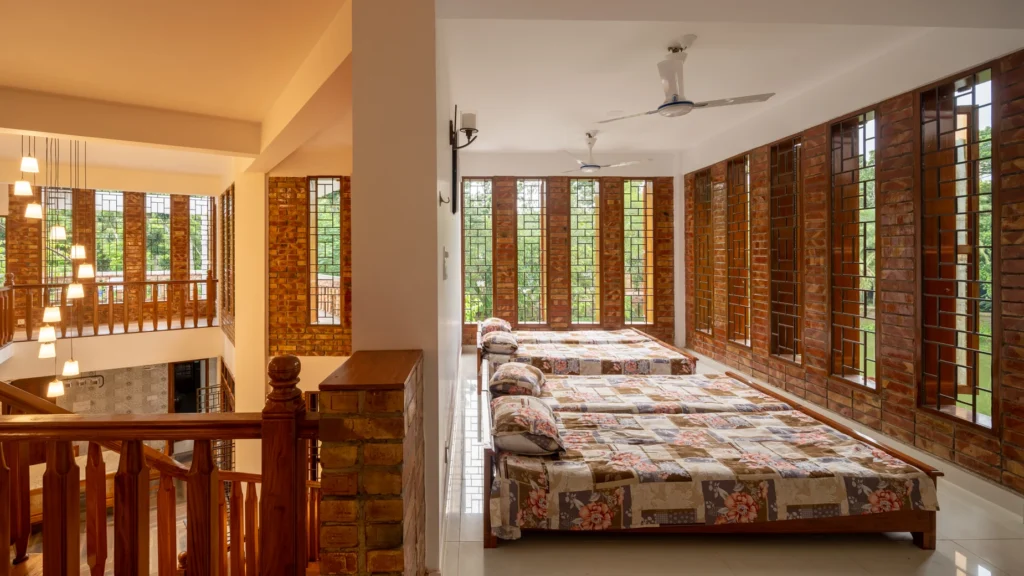

The private living area is the immediate space after the public living. It is accessed through an indirect entry. Opposite to it are two bedrooms for guests to stay in. Adjacent to the living area is the dining space and a spacious kitchen opening up to the pond side. A servant’s room is placed beside it. A picturesque stairway leads to the first floor, housing three main bedrooms and a multipurpose room that can accommodate up to four individuals comfortably when needed—a space designed for frequent family celebrations.
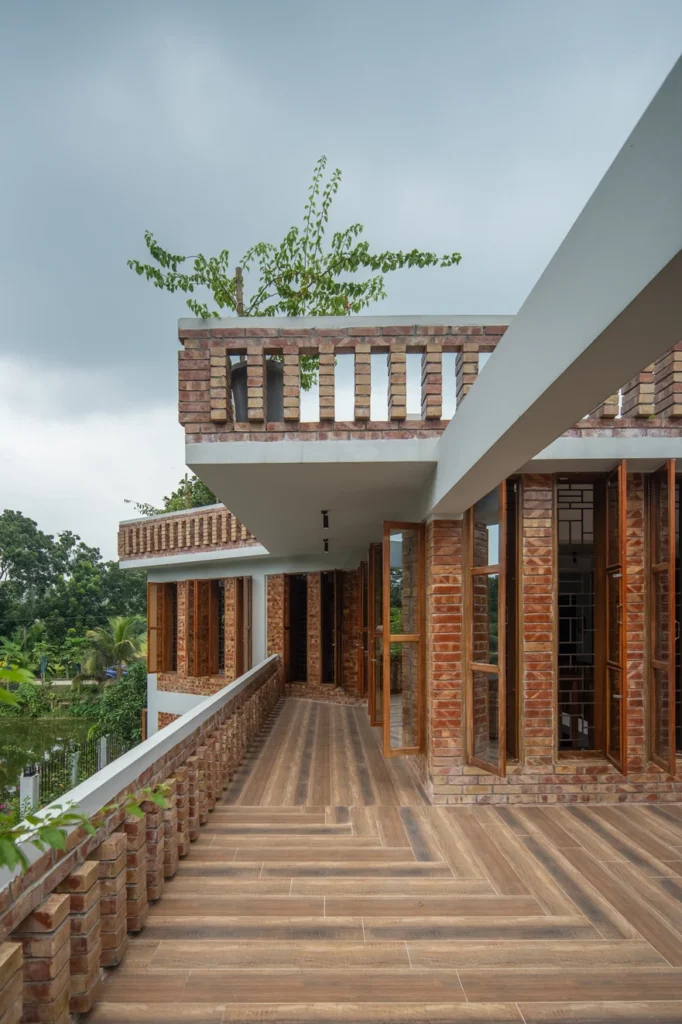

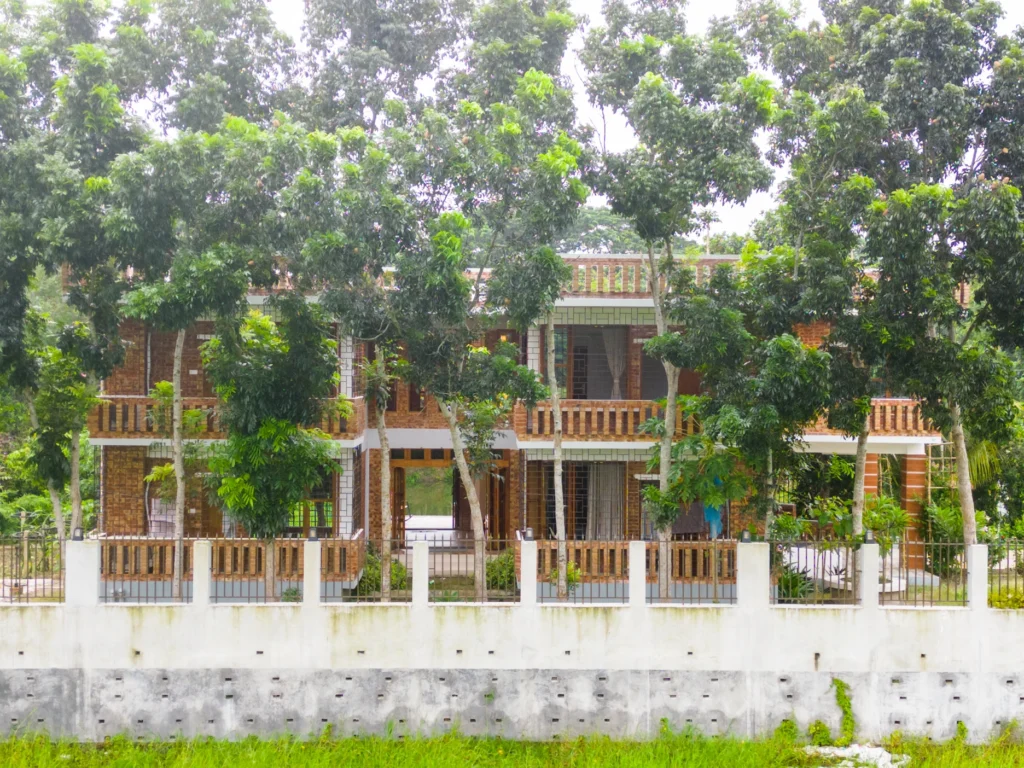


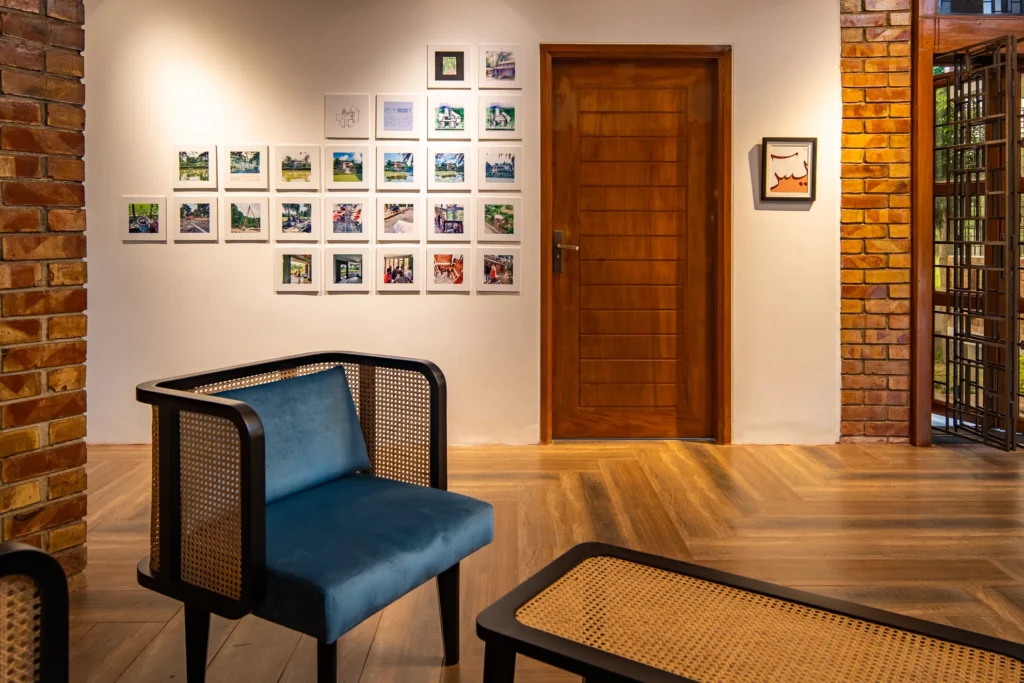
One pivotal design focus was to celebrate the pond in every way possible. All common areas are either physically or visually connected to their serene surroundings. The pond’s shore features a landscaped “ghat” design with stepped seating, creating an informal gathering space. Privacy consideration was layered into the design concept. Most of the windows of the bedrooms open to a semi-private veranda, where attention is given to the design detail of a fixed seating space to enhance the quality of the space. The terrace on the first floor also works as a private terrace due to its meticulous positioning.


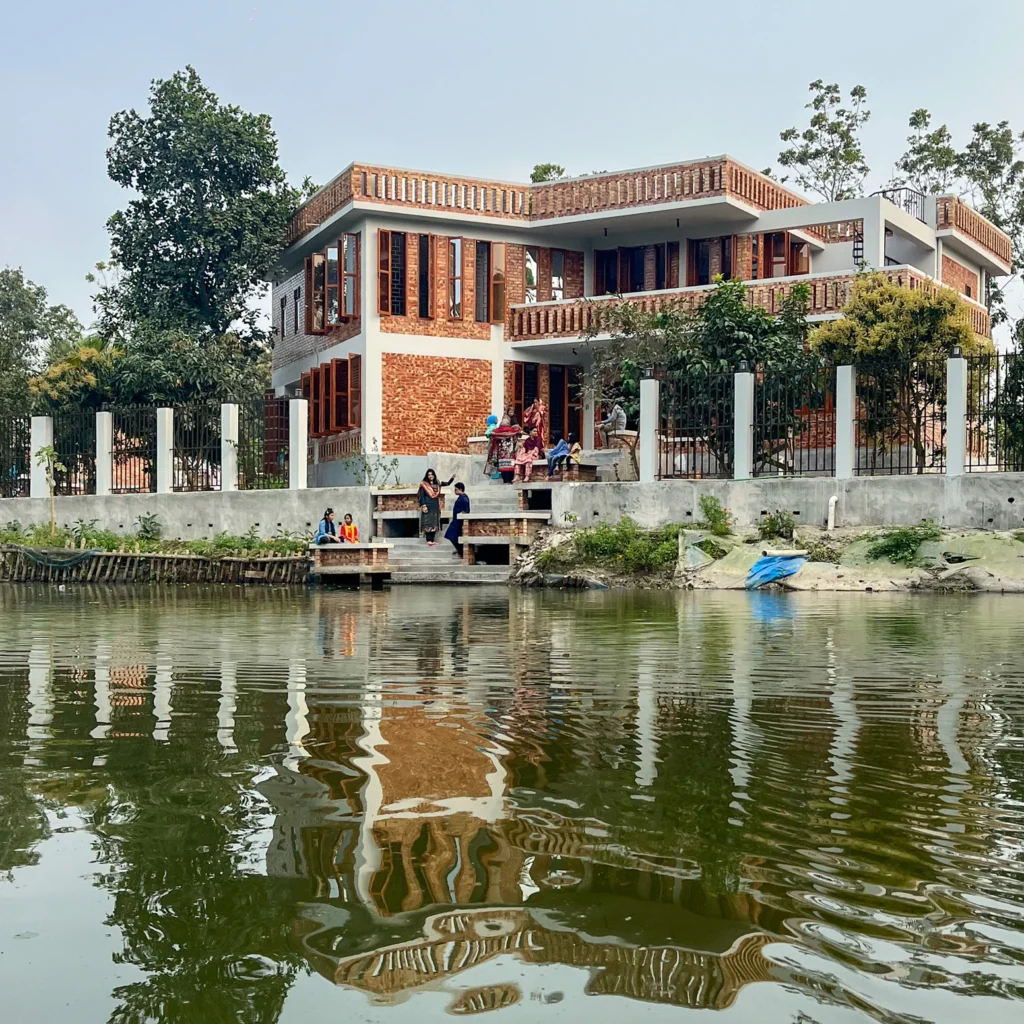

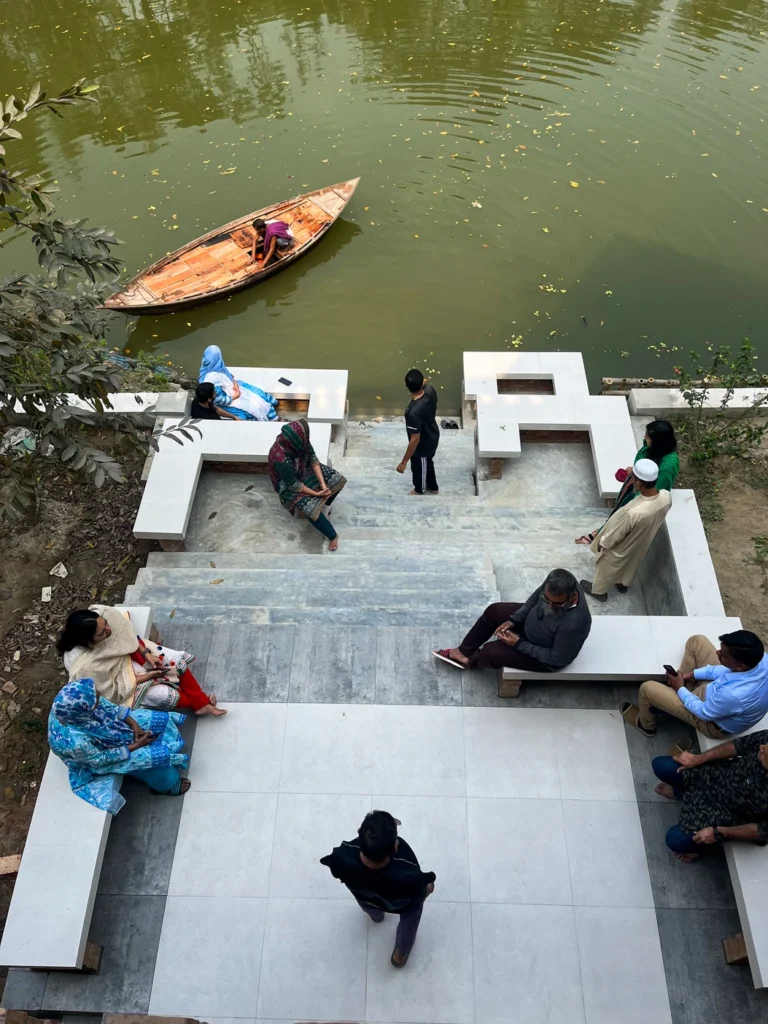
The building’s elevation pattern emerges from a structural solution aimed at minimizing the use of windows while maximizing openness, light, and air circulation. Parallel 10″ X 10″ strip walls were introduced, resulting in the current building appearance. In conclusion, The design is an attempt to exercise fusing traditional simplicity with modernistic abstraction. Along with considering functionality and familial connections, it creates space that not only meets the practical needs of its residents but also fosters a sense of community and cultural celebration within the rich community context.
Project Drawings:


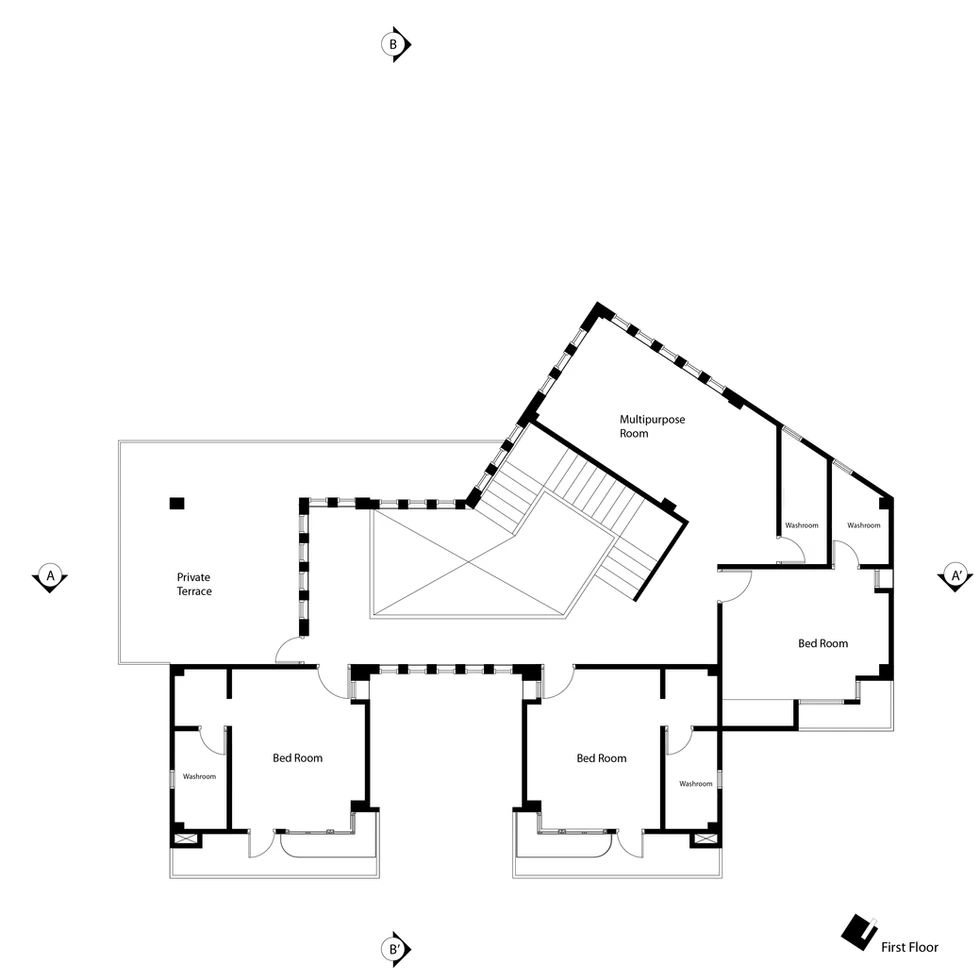
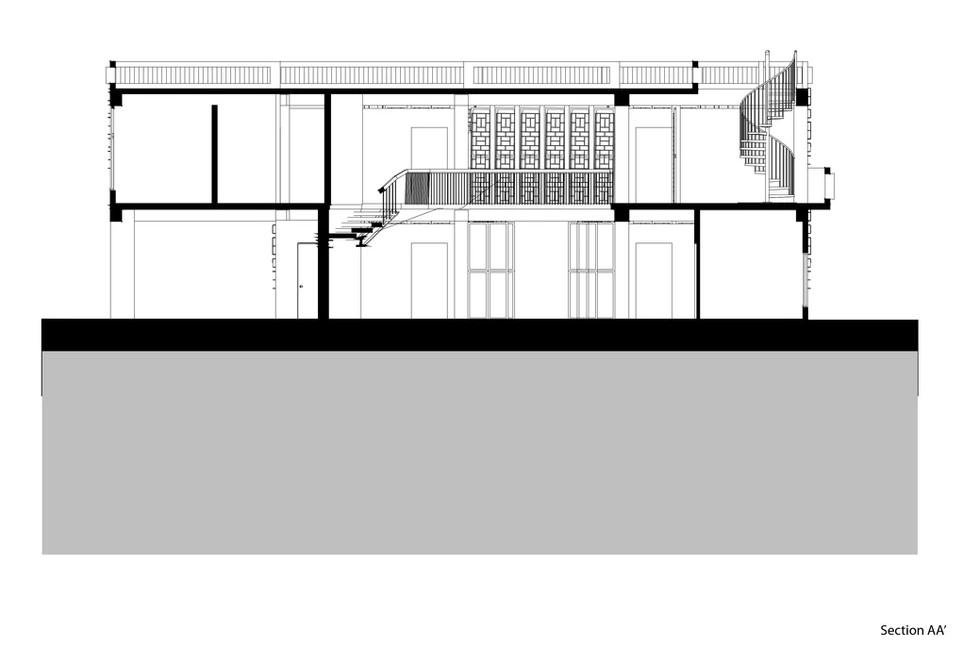


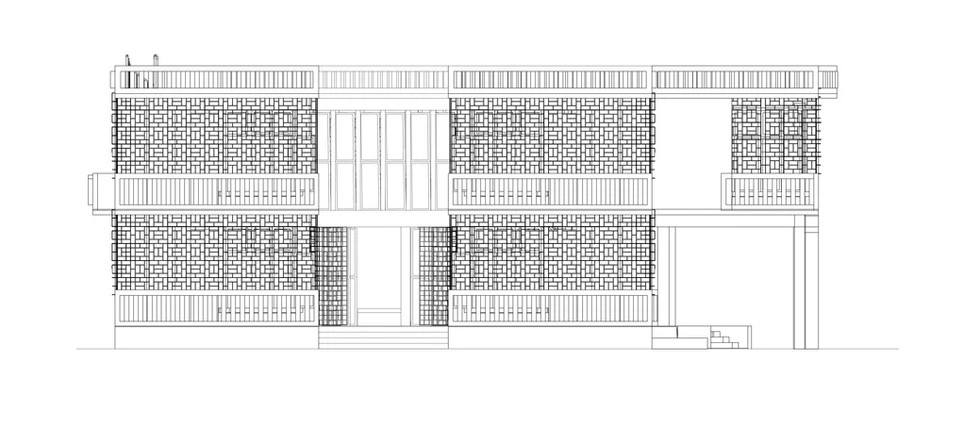
Project Details:
Name: Hawladar Bari or Hawladar House
Location: Shibchar, Bangladesh
Area: 4,495 sq. ft.
Status: Completed (2023)
Designed by: Maruf Raihan.Works
Client: Md. Emdad Hossain
Typology: Residential Architecture
Consultants:
Structural Engineer: Muhammad Rasel Al-Amin
3D Visualizer: Sumaiya Ara Simi
Calligrapher For Interior: Maruf Raihan
Project Description: Atkia Sadia Rahman
Structural Consultant, Mep And Construction Team: Al-Amin Consultant
Photographs: Maruf Raihan
Project Description: Atkia Sadia Rahman





